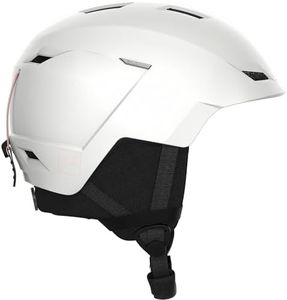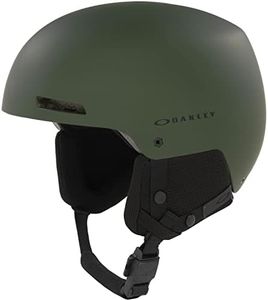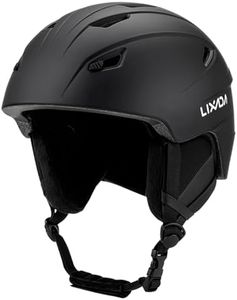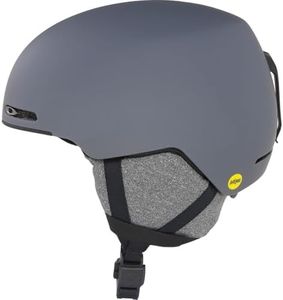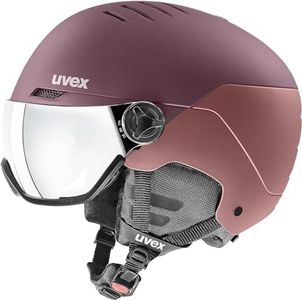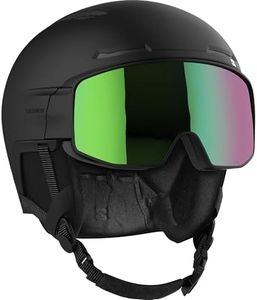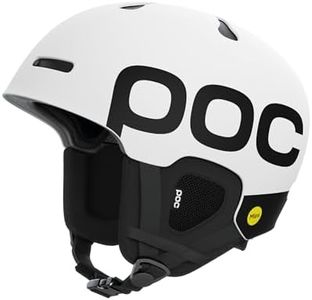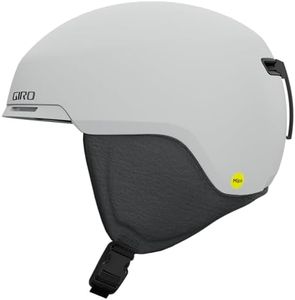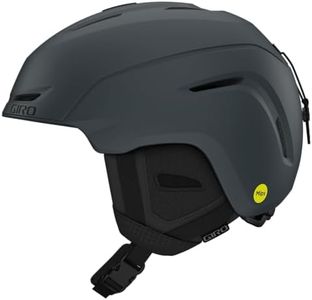We Use CookiesWe use cookies to enhance the security, performance,
functionality and for analytical and promotional activities. By continuing to browse this site you
are agreeing to our privacy policy
10 Best Ski Helmets
From leading brands and best sellers available on the web.Buying Guide for the Best Ski Helmets
When choosing a ski helmet, your main goal should be to find one that offers the best combination of safety, comfort, and fit for your needs. A ski helmet is more than just a piece of protective gear—it's essential for enjoying your time on the slopes with peace of mind. Helmets come with various features aimed at enhancing protection, adjusting comfort, and helping you deal with changing weather conditions. By understanding the different key features, you can confidently focus on what matters most to you, ensuring your helmet serves you well throughout the season.Certification/Safety StandardsThis refers to the safety tests and approvals a helmet has passed, such as CE EN1077 or ASTM F2040. These standards make sure the helmet will provide effective impact protection in case of falls or collisions. Helmets with recognized certifications are tested for shock absorption and penetration resistance. In practice, all ski helmets should meet at least one official safety standard, so always check the label before buying. Trustworthy certification is usually a must-have, while extra safety features might appeal to those wanting added assurance.
Fit and AdjustabilityFit is how well the helmet sits on your head—too loose or too tight can both be problematic, so a snug, comfortable fit is key for safety and enjoyment. Adjustability refers to features like dial systems or adjustable straps that help you fine-tune the helmet's grip. Helmets typically come in small, medium, and large sizes, but many also have fine-tuning systems that accommodate small differences in head shape. For occasional skiers, as long as the helmet is snug (it shouldn’t move when you shake your head), you’re set. If you ride often or for long days, better adjustability can keep you comfortable.
VentilationVentilation is the helmet's ability to let airflow through, keeping your head cool when you're exerting yourself. Some helmets have fixed vents, while others offer adjustable ones you can open or close. Minimal vents are suited for very cold climates or those who get cold easily. Models with lots of adjustable vents are great for active skiers or those who ski in a range of temperatures. If you tend to overheat, choose a helmet with more vents and adjustability to stay comfortable all day.
WeightThe weight of a helmet influences how comfortable it feels over a long day. Lighter helmets are often more comfortable and less fatiguing, but very lightweight models can cost more. Most helmets fall in a range that won’t feel too heavy unless you’re sensitive or you ski for long periods. If you plan on doing lots of backcountry or all-day sessions, go lighter. For shorter sessions, weight might be less noticeable.
Liner and PaddingThe liner and padding inside a helmet affect comfort, fit, and warmth. Removable, washable liners are easier to keep clean and fresh. Some liners also provide extra warmth, while others wick moisture well. If you ski in cold conditions or want a plush feel, go for thicker, warmer liners. If you'll be sweating or skiing in milder weather, prioritize moisture-wicking and removable pads.
Ear Coverage and Audio CompatibilityEar coverage refers to how much and how snugly the helmet covers your ears, affecting both warmth and the ability to hear. Some helmets also offer compatibility with audio systems for music or comms. Thick, well-insulated ear pads are best for cold climates, while more minimalist pads suit warmer spring skiing. If you love listening to music or plan to use helmet comms, look for removable or audio-compatible ear pads.
Goggle Compatibility and RetentionGoggle compatibility means how well the helmet works with ski goggles. A good helmet will fit comfortably with most goggles, without leaving gaps that let in wind or cold. Goggle retention straps on the back of the helmet help keep straps secure. If you already have goggles, bring them with you to check the fit. If not, look for helmets described as having universal or wide compatibility to give you more options later.
